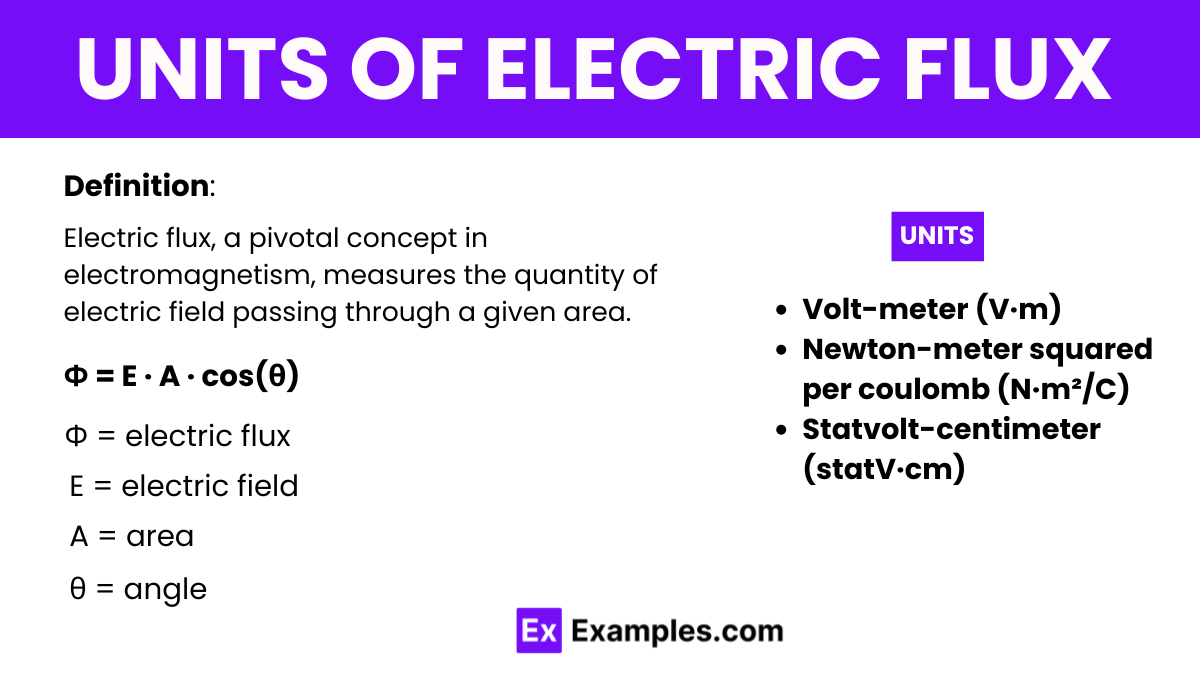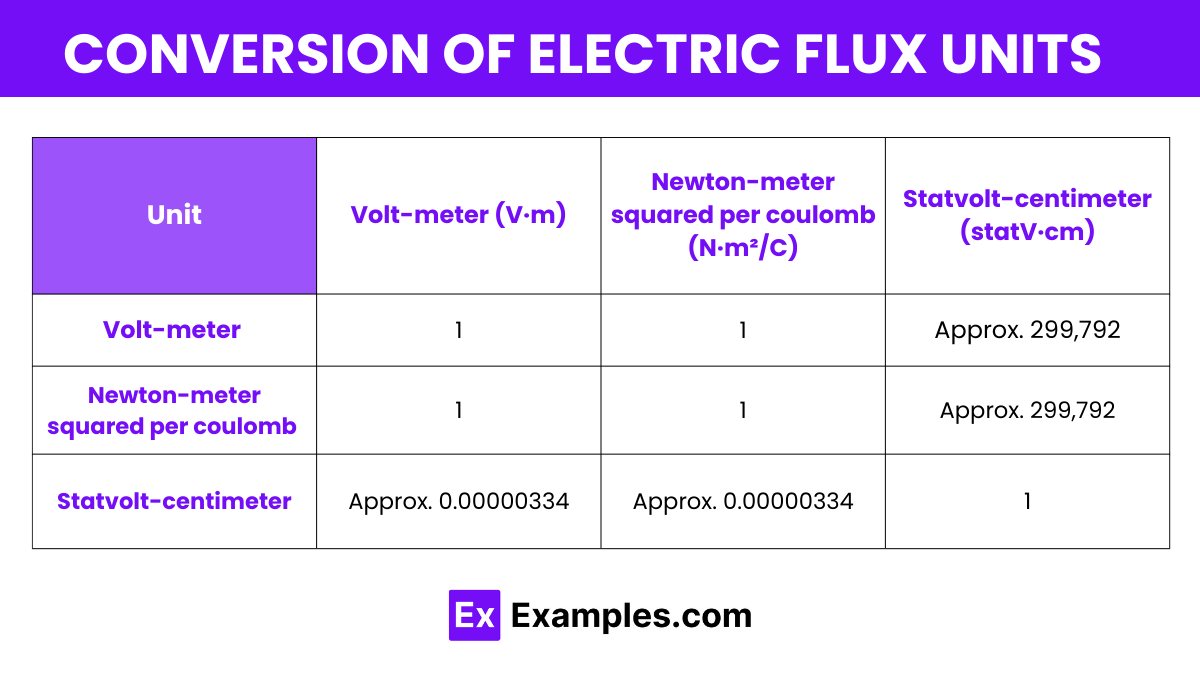What is the SI unit of electric flux?
Coulomb
Newton
Volt
Volt-meter

Electric flux is a key concept in electromagnetism, encapsulating the amount of electric field passing through a given area. To measure and describe electric flux effectively, we utilize specific units known as newton-meters squared per coulomb (N·m²/C) or alternatively, volt-meters (V·m).
Electric flux, a key concept in electromagnetism, quantifies the amount of electric field that passes through a specific area. The SI unit for measuring electric flux is the volt-meter (V·m).
In the Centimeter –Gram–Second(CGS) system, the unit used to measure electric flux differs from the SI system. The CGS unit for electric flux is the statvolt-centimeter (statV·cm).
The formula for electric flux (Φ) is expressed as:
This formula calculates how much electric field passes through a given area, incorporating the angle to account for the directional nature of the field.
| Unit | Symbol |
|---|---|
| Volt-meter | V·m |
| Newton-meter squared per coulomb | N·m²/C |
| Statvolt-centimeter | statV·cm |
The volt-meter is the SI unit of electric flux, which quantifies the total electric field passing through a surface area. This unit measures how an electric field interacts with a defined area, reflecting the strength and direction of the field across that area. It is widely used in electromagnetism and various applications of electrical engineering.
Newton-meter squared per coulomb directly measures the electric flux as the product of electric field strength in newtons per coulomb and the area through which it passes in square meters. It provides an intuitive understanding of electric flux, showing the force-field interaction over an area relative to the charge involved. This unit is especially useful in theoretical physics and electrical engineering calculations.
The statvolt-centimeter is the CGS unit for electric flux, still utilized in some specialized areas of physics. It measures electric flux in terms of statvolts (a CGS unit of electric potential) per centimeter squared, providing a comparison to the more commonly used volt-meters but adjusted for the CGS measurement system. This unit is beneficial for calculations and discussions within frameworks that require CGS units.

| Unit | Volt-meter (V·m) | Newton-meter squared per coulomb (N·m²/C) | Statvolt-centimeter (statV·cm) |
|---|---|---|---|
| Volt-meter (V·m) | 1 | 1 | Approx. 299,792 |
| Newton-meter squared per coulomb (N·m²/C) | 1 | 1 | Approx. 299,792 |
| Statvolt-centimeter (statV·cm) | Approx. 0.00000334 | Approx. 0.00000334 | 1 |
No, the SI unit of electric flux is not the weber; it is the volt-meter (V·m), which quantifies the total electric field passing through a surface.
The SI unit of electric flux cannot be expressed in terms of joules, as joules measure energy, not electric flux.
No, a tesla is not a unit of electric flux; it is the SI unit for magnetic flux density, describing the concentration of magnetic field lines.
Text prompt
Add Tone
10 Examples of Public speaking
20 Examples of Gas lighting
What is the SI unit of electric flux?
Coulomb
Newton
Volt
Volt-meter
Which of the following units is equivalent to Newton-meter squared per coulomb?
Volt-meter
Joule-meter
Coulomb-meter
Tesla-meter
What is the dimensional formula of electric flux?
[MLT⁻²Q⁻¹]
[ML²T⁻²Q⁻¹]
[MLT⁻¹Q⁻²]
[ML²T⁻²Q]
If the electric field is measured in volts per meter, what is the unit of electric flux through a surface?
Volt
Coulomb
Newton
Volt-meter
How is electric flux related to the electric field and area vector?
It is the product of electric field and area vector
It is the sum of electric field and area vector
It is the difference between electric field and area vector
It is the ratio of electric field and area vector
What is the unit of electric flux density?
Volt per meter
Newton per coulomb
Coulomb per meter squared
Joule per meter squared
In the CGS system, what is the unit of electric flux?
Statvolt
Gauss
Dyne-centimeter
Statvolt-centimeter
What quantity does the unit Newton-meter squared per coulomb represent?
Electric potential
Electric flux
Electric charge
Electric current
Which law directly involves electric flux?
Ohm's Law
Gauss's Law
Faraday's Law
Faraday's Law
If the electric field is uniform and the surface is flat, how is electric flux calculated?
E/A
E + A
E - A
E·A
Before you leave, take our quick quiz to enhance your learning!

